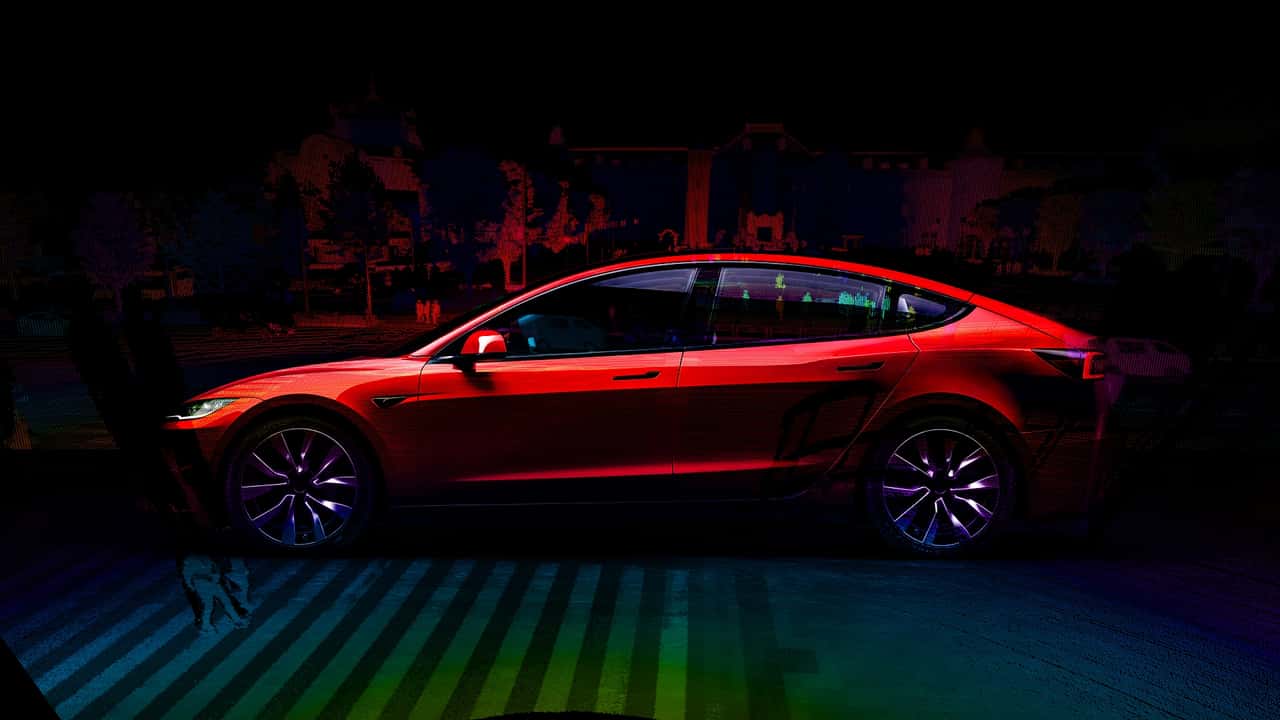Tesla, the company headed by a CEO who has called lidar a “crutch” and “fool’s errand,” spent at least $2 million on Lidar sensors in 2024—about 10% of the manufacturer’s revenue this quarter alone.
As reported by The Verge, that number comes directly from lidar maker Luminar, which revealed in its quarterly earnings report that Tesla was its top customer so far this year.
Get Fully Charged
Tesla’s Denial of Lidar
Tesla CEO Elon Musk has long been a proponent of vision-based driver assistance systems. In fact, he removed just about every sensor from the Model 3 for what the company called “Tesla Vision,” despite objections from consumers who say that the performance comes nowhere close to the ultrasonic sensor-equipped models of yesteryear. Now, Tesla is betting big that it can achieve full autonomy on vision alone—or is it?
Luminar says that Tesla represented around 10% of its $21 million quarterly income or around $2.1 million in sensor orders. Its sensors cost as much as $1,000 each. With some basic napkin path, Tesla’s orders work out to somewhere in the neighborhood of 2,100 sensors.
Tesla has used lidar in vehicles before, just not how you think. In 2021, a Tesla Model Y fitted with four Luminar Hydra units was spotted driving around. This was timed just as a partnership between Tesla and Luminar came to light via a Bloomberg report. It raised speculation about what Tesla could be doing with these Lidar units strapped to its otherwise Lidar-less car.
But that’s quite a reversal from Tesla, which has never had great things to say about the technology.
“What we’re going to explain to you today is that lidar is a fool’s errand,” said Musk during a 2019 investors’ event. “Anyone relying on lidar is doomed. Doomed. Expensive sensors that are unnecessary.”
It was later apparent that the company may have been performing validation mapping, which means comparing the data produced by Tesla’s vision-based systems to that of a Lidar sensor. However, 2,100 sensors seem like a tall order for validation mapping. At four sensors per car, this would work out to around 525 vehicles being fitted with these sensors.
To compound the curiosity, Musk replied on X to fan account Whole Mars Catalog by saying Tesla doesn’t need to use lidar for validation mapping purposes anymore, either.
So what the heck is Tesla doing with these Lidar sensors? Some speculate that the sensors might be used for Tesla’s upcoming Cybercab. Recent reports indicate that Tesla may be looking to launch its fleet of robotaxis in China all but immediately. Lidar in a new market would seem like a logical choice. Others believe the sensors could be used for Tesla’s humanoid robot, Optimus.
Or maybe it’s for something completely innocent like manufacturing or quality control—who knows? And if you ask Luminar their opinion, they seem to be just as in the dark as everyone else:
“This isn’t the first time that they’ve ordered Lidars from us,” said Luminar CEO Tom Fennimore during the company’s earnings call. “But I would say it’s been more lumpy than recurring. What exactly they’re doing with them, we can only speculate.”
Tesla, the electric vehicle powerhouse founded by entrepreneur Elon Musk, is known for its cutting-edge technology and innovative approach to automotive design. One key aspect of Tesla’s self-driving capabilities is its reliance on computer vision systems, which use cameras and other sensors to navigate the road and detect obstacles.
Despite Tesla’s staunch opposition to lidar technology, one company in particular has found itself in the unique position of being Tesla’s biggest customer: Velodyne Lidar, Inc. Velodyne, a California-based lidar manufacturer, has provided its sensors to Tesla for use in its vehicles, despite Musk’s vocal criticism of the technology.
Lidar, which stands for Light Detection and Ranging, uses lasers to create high-resolution 3D maps of the surrounding environment. While lidar technology has been widely adopted by other autonomous vehicle manufacturers, Tesla has opted to focus on developing its computer vision system instead.
So why has Tesla, a company known for its anti-lidar stance, chosen to work with Velodyne? One possible explanation is that Tesla sees value in using lidar technology as a complement to its existing sensor suite. Lidar sensors can provide additional depth and accuracy to Tesla’s self-driving system, especially in challenging conditions such as low light or poor weather.
Additionally, Velodyne’s lidar sensors have a proven track record of reliability and performance, making them an attractive choice for Tesla. By partnering with Velodyne, Tesla is able to leverage the expertise and technology of a leading lidar manufacturer without having to develop the technology in-house.
Despite its unconventional approach to autonomous driving technology, Tesla’s collaboration with Velodyne demonstrates the company’s commitment to delivering the most advanced and reliable self-driving capabilities to its customers. By combining the strengths of both computer vision and lidar technology, Tesla is poised to continue leading the way in the development of autonomous vehicles.
As the automotive industry continues to evolve, it will be interesting to see how Tesla’s unique approach to lidar technology shapes the future of self-driving cars. With Velodyne as its biggest customer, Tesla is well-positioned to push the boundaries of what is possible in autonomous driving and deliver a safer, more efficient driving experience for all.

